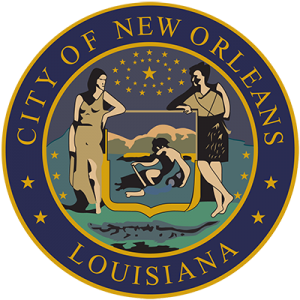The City of New Orleans has launched Resilient New Orleans, a strategic roadmap for the City of New Orleans to build urban resilience. One of the initiatives being undertaken is an assessment of “advanced insurance coverage” including parametric catastrophe insurance solutions.
 New Orleans has enlisted the help of organisations such as 100 Resilient Cities (100RC), the Rockefeller Foundation, NOAA and FEMA, but for the catastrophe risk transfer portion of the plan it is working with reinsurance firm Swiss Re.
New Orleans has enlisted the help of organisations such as 100 Resilient Cities (100RC), the Rockefeller Foundation, NOAA and FEMA, but for the catastrophe risk transfer portion of the plan it is working with reinsurance firm Swiss Re.
The plan aims to put in place “Resilient infrastructure recovery and risk transfer” tapping the private insurance or reinsurance (and capital) markets to put in place pre-disaster financing to help the City to “improve or repair critical systems after a disruptive event.”
“Being resilient means more than having levees and wetlands to hold back water,” Mayor Landrieu explained.
Gaining access to efficient sources of risk finance and transfer is critical to the resilience aims of cities worldwide. The lack of pre-disaster funding often leaves the burden at the feet of the local or national government, or with the cities taxpayers themselves.
By putting in place a program of insurance products, designed to respond in the right way to disaster, catastrophe or severe weather conditions, a city can ensure it has financing available rapidly to help it to begin the recovery process more quickly.
Swiss Re’s experience working with parametric insurance and risk transfer solutions, on sovereign disaster risk transfer transactions, such as the MultiCat Mexico catastrophe bonds (MultiCat Mexico 2009 Ltd. and MultiCat Mexico Ltd. (Series 2012-1)), or with China on regional parametric catastrophe insurance schemes, makes it an ideal partner to help the City of New Orleans reach its goal.
Sovereign country and city risk exposure to catastrophes and disasters is one of the least well-funded areas of the insurance value-chain. As a result, any initiatives that put in place some form of responsive disaster insurance product will effectively be creating new risk opportunities for the global insurance and reinsurance market, as well as narrowing part of the protection gap, shifting losses to private insurance or capital markets and away from the economy.
Having pre-disaster risk transfer and financing in place to support post-disaster recovery cannot prevent disasters or minimise the human toll, but it can enable recovery to be more rapid, the financial impact to be less long-lasting and place the risk in the markets that can afford to assume them.
For the City of New Orleans, putting in place a “comprehensive financing strategy” for resilience, means public, private and insurance funding need to work together.
To reach that goal the City is working with Swiss Re to “identify the most advanced insurance coverage models to reduce exposure in the face of risk,” which include parametric insurance risk transfer solutions and risk pooling initiatives.
New Orleans is a clear candidate for a catastrophe bond structure, focused on providing cover for hurricane wind and storm surge risks. The risk profile of the region is well understood by the insurance and reinsurance markets and since Katrina the risk models have been adapted and improved to take into account such extreme storm impacts.
The capital markets and insurance-linked securities (ILS) investors would be keen to support a New Orleans catastrophe bond. Likewise the private insurance and reinsurance market would have the capacity necessary to support any parametric insurance or risk pooling initiatives.
The City aims to study various disaster scenarios to identify the critical systems within New Orleans that need protection and how best risk transfer can support financing those exposures. New Orleans aims to be “the first city to pre-fund the disaster resilience of its critical infrastructure using private market assets.”
“Catastrophic losses will be pre-funded through the transfer of the risk to the private market. This will decrease the chances of sustained impairments to basic services and save the city and its residents substantial expense in the future while improving the speed of recovery,” the strategy explains.
Working to reach that goal with the support of insurance, reinsurance, capital markets and ILS is a worthwhile effort. The New Orleans plan provides a glimpse into the opportunity that financial risk markets have to play a key role to help the cities of the world build their resilience to disaster.
 View all of our Artemis Live video interviews and subscribe to our podcast.
View all of our Artemis Live video interviews and subscribe to our podcast.
All of our Artemis Live insurance-linked securities (ILS), catastrophe bonds and reinsurance video content and video interviews can be accessed online.
Our Artemis Live podcast can be subscribed to using the typical podcast services providers, including Apple, Google, Spotify and more.































